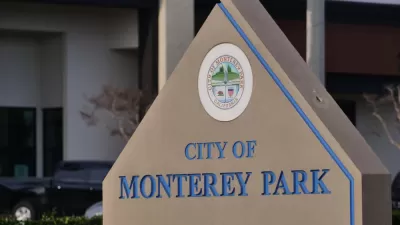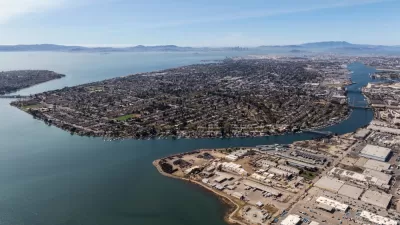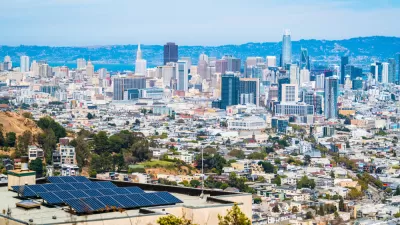Land use planning decisions are mostly made by city councils and planning commissions. But there are times when the people decide, as exemplified by the city of Monterey Park's recently approved Measure JJ.

Should land use planning decisions be made by voters? There is no simple answer to this question. In the latest elections, in about 20 California cities where growth and development measures were on the ballot, voters were mostly anti-development. The city of Monterey Park was one of the few exceptions, where voters passed a land use measure allowing for focused growth in certain areas of the city.
Monterey Park lies about seven miles east of downtown Los Angeles, at the western edge of the San Gabriel Valley. Measure JJ was placed on the ballot by the Monterey Park City Council. On November 3, 2020, the measure was approved by 52.3% of voters, resulting in the adoption of a new Land Use Element (LUE) for the Monterey Park General Plan (GP). Under California law, the city’s GP must include seven elements including the LUE. Overall, the GP, particularly the LUE, constitutes the city’s vision for economic, social, and land use development. In Monterey Park, voter approval is required to adopt or amend the LUE. On March 3, 2020, voters rejected a previous version of the LUE identified as Measure II.
The LUE makes some adjustments to land uses, building sizes, and building heights. It also removed overlay zones for affordable housing in the Corporate Center Drive area that was included with Measure II. Since Measure JJ was approved by voters, the LUE would regulate land uses in the city until 2040. To ensure that the LUE is implemented, Measure JJ authorizes the City Council to adopt regulations by ordinance.
FULL STORY: Monterey Park, California, Measure JJ, Land Use Proposition (November 2020)

Study: Maui’s Plan to Convert Vacation Rentals to Long-Term Housing Could Cause Nearly $1 Billion Economic Loss
The plan would reduce visitor accommodation by 25,% resulting in 1,900 jobs lost.

North Texas Transit Leaders Tout Benefits of TOD for Growing Region
At a summit focused on transit-oriented development, policymakers discussed how North Texas’ expanded light rail system can serve as a tool for economic growth.

Using Old Oil and Gas Wells for Green Energy Storage
Penn State researchers have found that repurposing abandoned oil and gas wells for geothermal-assisted compressed-air energy storage can boost efficiency, reduce environmental risks, and support clean energy and job transitions.

Santa Barbara Could Build Housing on County Land
County supervisors moved forward a proposal to build workforce housing on two county-owned parcels.

San Mateo Formally Opposes Freeway Project
The city council will send a letter to Caltrans urging the agency to reconsider a plan to expand the 101 through the city of San Mateo.

A Bronx Community Fights to Have its Voice Heard
After organizing and giving input for decades, the community around the Kingsbridge Armory might actually see it redeveloped — and they want to continue to have a say in how it goes.
Urban Design for Planners 1: Software Tools
This six-course series explores essential urban design concepts using open source software and equips planners with the tools they need to participate fully in the urban design process.
Planning for Universal Design
Learn the tools for implementing Universal Design in planning regulations.
Ascent Environmental
Borough of Carlisle
Institute for Housing and Urban Development Studies (IHS)
City of Grandview
Harvard GSD Executive Education
Toledo-Lucas County Plan Commissions
Salt Lake City
NYU Wagner Graduate School of Public Service





























